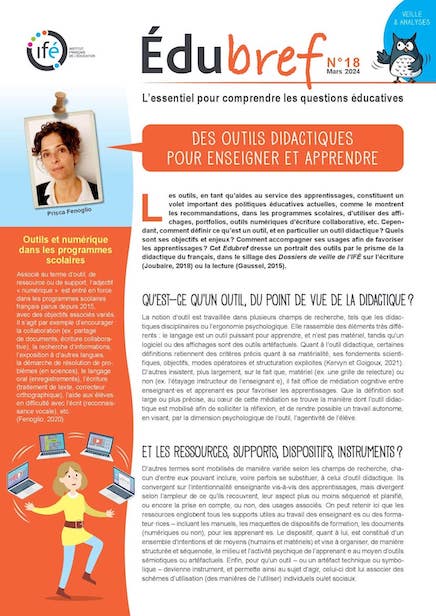Contemporary Perspectives on Childhood
n°68, novembre 2011
portrait

Author(s) : Marie Musset
Download PDF
Résumé :
This study provides a brief overview of some of the new paradigms of childhood. The study was conducted as part of the POLEART program funded by the French National Research Agency (Agence Nationale de la Recherche) and led by the ‘Education, Cultures et Politiques’ research center (University of Lyon 2, ENS-IFé, and Jean Monnet University), in association with the Centre Max Weber (CNRS), Profeor-CIREL (University of Lille 3), and CRIFPE (Centre de recherche interuniversitaire sur la formation et la profession enseignante, Quebec, or Interuniversity Research Centre on Education and the Teaching Profession).
In recent years, childhood has become both a major research topic and the focus of media attention. In research, the current sociology of childhood overlaps to some extent with ‘Childhood studies’, a relatively new field that emerged in the 1990s. In the media, the focus of attention tends to vary. While there has been some interest in the notion of the child-king and its opposite, the child-victim, there has also been much emphasis on the supposed conflict between ‘pedagogues’ (who tend to adopt a child-centred approach) and ‘republicans’ (who tend to prefer a knowledge-based approach). Another issue is whether to promote child liberation or the authority of adults in order to remedy the current educational crisis.
Childhood is a social rather than a biological category or phenomenon, and as such needs to be seen as a social construct. Representations of childhood in the West have been predominantly shaped by eighteenth-century thought. Locke and Rousseau in particular have been of enduring interest to both educationalists and families. Foucault demonstrated the significant impact of the new classification systems that emerged in the eighteenth century and that could be applied to society, whether in an educational or prison context. Following the work of Condorcet and Leibniz, one common assumption has been that a ‘normal’ child is a healthy and well-educated child (in the sense of ‘well-mannered’), since social and behavioral disorders are considered to be pathologies. The early twentieth century was marked by the pioneering work of Piaget, although his findings have been challenged in recent decades as a result of major developments in psychology and cognitive science. A spatio-temporal framework specific to childhood also lies at the heart of the historical sociology of childhood. Children create a culture of childhood – a culture carefully scrutinized and targeted by producers and manufacturers of child products. However, it is important to note that the relationships between mass culture and child culture are more complex than is commonly assumed in marketing. As part of this consensus, one specifically French assumption is the uniqueness of rhythms, methods and means from the earliest age. School has become the institutional framework of reference for the socialization of children.
For some, childhood is a period of life, while for others it is a state or an experience. This latter view implies that there is a child in every one of us, whatever our age. Because of the democratizing and egalitarian impulse of modern societies, the age criterion has tended to subside as the basic dividing line between childhood and adulthood. Defined as subjects in the Convention on the Rights of the Child, children, as both dependent and autonomous beings, have come to represent a ‘paradoxical alter-ego’. In contemporary society, there has been a shift from adultcentrism to pedocentrism, and a conflict between child liberationists and child caretakers has emerged. As a result of the evolution of contemporary law, and of juvenile criminal law in particular, most European countries have come to recognize that a child is an incomplete individual who reaches maturity through education. A product of democratization and a sign of the end of traditional authority, the current crisis of authority (as Hannah Arendt described it) has its origins in this new representation of childhood: while children are recognized as being different from adults, they are also considered to have the same rights as adults. These changes account for the current crisis of family law and children’s rights in many democracies.
Academic research on childhood has attracted significant media attention since the 1970s. In their popularized form, research findings have often tended to be decontextualized in the media, while producing academic norms serving as reference standards. The concept of childhood as a ‘category with specific rights has given credence to a new representation of children in the general public and in the world of marketing’. Today, the emphasis on meeting the needs and rights of children is a fundamental norm of family and social life.
Art has a key role to play in this new landscape. More specifically, access to the arts is a right for children, although it is important to recognize that aesthetic experience is an ontological encounter in which the difference between children and adults tends to dissolve. The figure of the child-artist is thus part and parcel of an attempt to redefine childhood.
Also available














